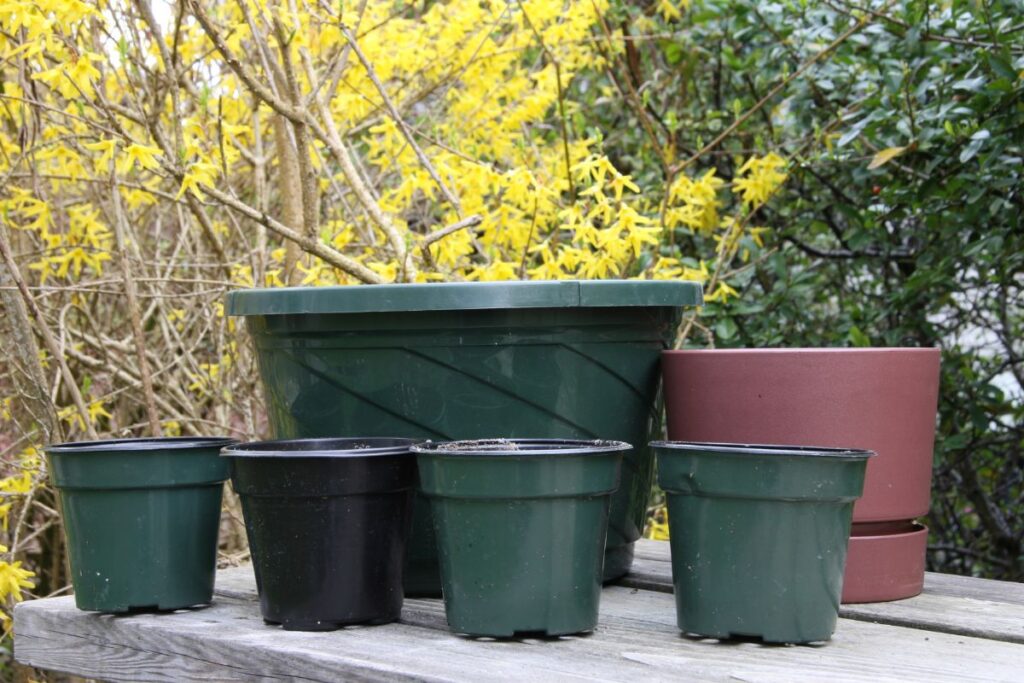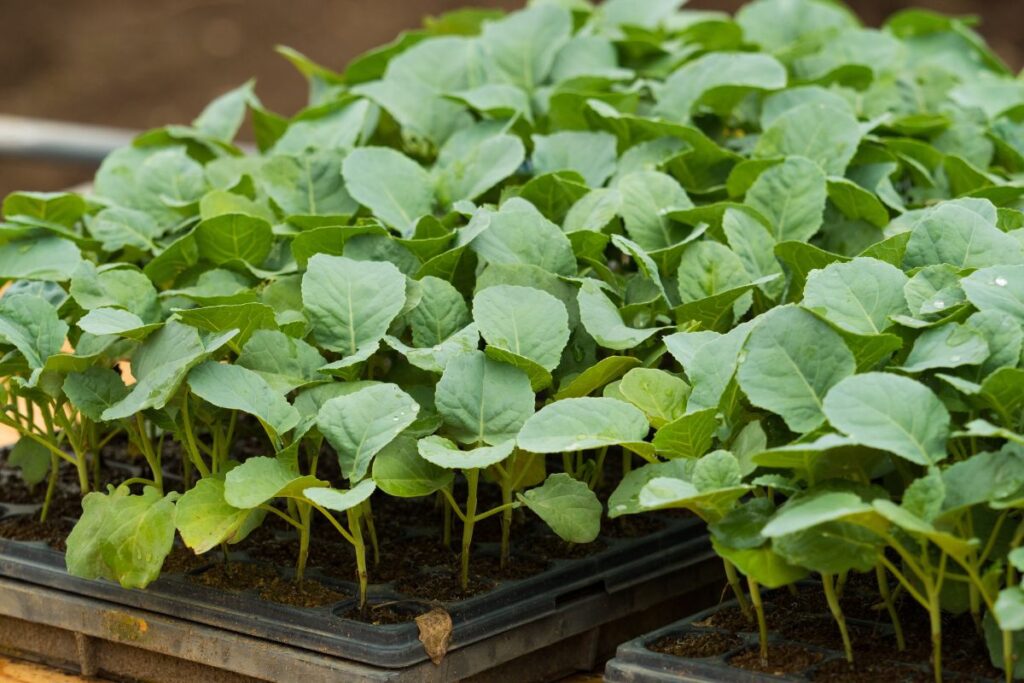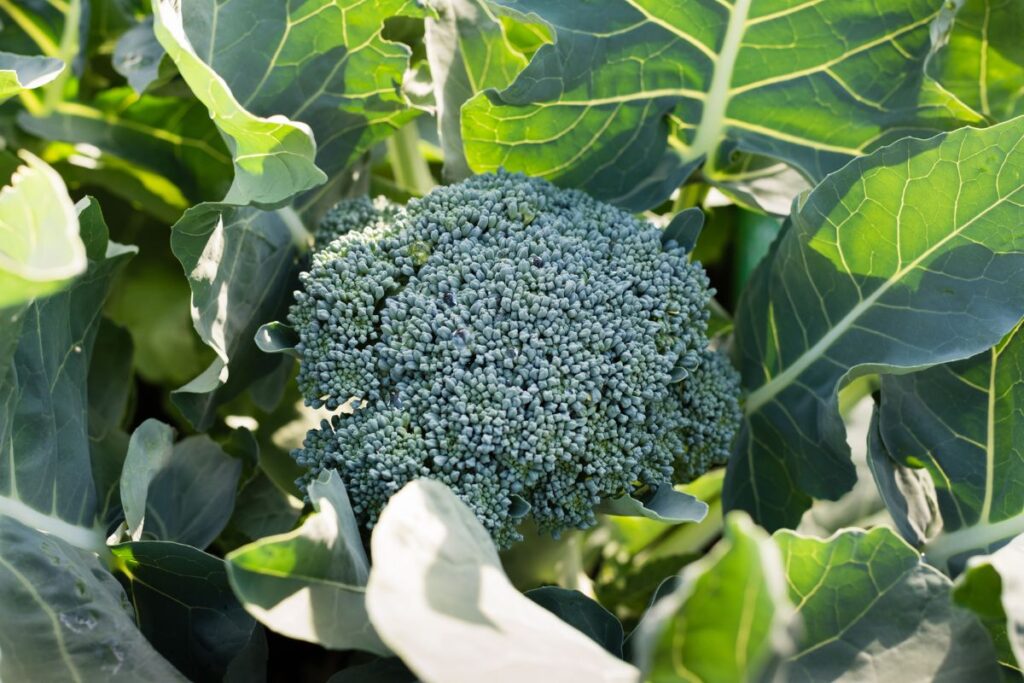Love broccoli?
Why not grow it at home?
It’s easy! Follow this step-by-step guide to grow fresh, healthy broccoli in a container.
Ready to get your hands dirty?
Let’s get started!
Step 1: Select the Ideal Container

When nurturing broccoli, it’s imperative you opt for a potting vessel that accommodates its extensive root system. Aim for a minimum depth and width of 12 inches. Containers can range from plastic planters and wooden crates to fabric gardening bags. Importantly, verify that your chosen container features adequate drainage openings at the bottom to avert excess moisture accumulation, which can cause detrimental root decay.
Step 2: Assemble Your Supplies
Before beginning the planting process, ensure you have all the needed items:
- Container: Opt for one that measures at least 12 inches in both depth and diameter.
- Soil: Choose a premium potting mix.
- Broccoli: Either seeds or young plants are suitable.
- Nutrients: Select a slow-release granular or liquid fertilizer.
- Irrigation Tools: A watering can or hose with a spray nozzle that provides a soft flow.
- Mulch: Utilize straw or compost for coverage.
Step 3: Prepare the Soil Mix
To ensure your broccoli thrives, use a superior potting mixture that facilitates drainage and delivers essential nutrients. Enhance the mix by integrating well-decomposed compost to nourish the soil. Keep a one-inch gap beneath the rim of the container to minimize the escape of water during irrigation.
Step 4: Planting Broccoli Seeds or Seedlings

You can start broccoli in two ways: using seeds or opting for young plants.
Seeds: Carefully place your broccoli seeds about 1/4 inch beneath the soil, organizing them in rows or scattered evenly. The soil should be kept moist until the tiny plants appear, typically within 5-10 days.
Transplants: Alternatively, ready-to-plant seedlings can be bought or grown indoors beforehand. When transferring them to your garden, ensure each plant is spaced 18 inches from its neighbors, allowing sufficient space for their development.
Step 5: Consistent Watering
To maintain your broccoli, a steady supply of moisture is crucial. Keep the soil consistently damp, avoiding excess water to prevent root saturation. Water gently, using either a watering can or a nozzle set to a fine spray, to avoid harming young plants. Aim to water early in the day so foliage dries under the sun, decreasing disease likelihood.
Step 6: Regular Fertilization
Administer a general-use nutrient mix to your broccoli every 3-4 weeks. Opt between slow-release pellets or liquid nutrients. Adhere strictly to the manufacturer’s guidelines for quantities to avoid plant damage from excessive application.
Step 7: Apply Mulch
To protect your broccoli plants, spread a 2-inch layer of straw or compost around the plant base. This layer maintains moisture levels in the soil, keeps weeds at bay, and ensures a stable soil temperature. Be mindful to leave the plant stems exposed to prevent rot.
Step 8: Ensure Proper Sunlight and Temperature

Broccoli thrives when exposed to ample sunlight—it’s best to place your containers where they’ll receive 6-8 hours of direct light daily. The ideal climate for broccoli ranges from 45°F to 75°F (7°C to 24°C). In warmer regions, shading your plants during peak heat wards off premature seeding. Your careful management of these elements supports healthy development.
Step 9: Manage Pests and Diseases
Regular monitoring is crucial to defend your broccoli crops against pests like aphids and cabbage loopers. Employing natural deterrents such as neem oil can mitigate these threats effectively. Additionally, encourage a population of predatory insects, for example, ladybugs, to maintain ecological control. Be vigilant for any disease symptoms, including powdery mildew, and respond swiftly to prevent spread.
Step 10: Harvesting Broccoli
When your broccoli’s main head is about 4 to 6 inches across, it’s time to collect it. With a sharp blade or shears, sever the head just over the floret cluster. Ensure the plant remains in its pot; it’s capable of yielding additional, smaller offshoots for later harvesting.


.